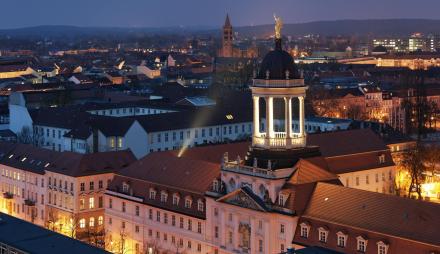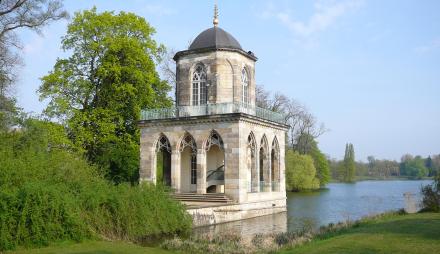King Friedrich Wilhelm IV himself initiated the octagonal shape of the elegant small chapel in the oldest part of what is now Babelsberg. He built a central structure on the village green, inspired by medieval rulers' churches. The detailed design from 1844 is attributed to Ludwig Ferdinand Hesse in collaboration with Christian Heinrich Ziller. The new church was consecrated on January 30, 1853.
As a result of World War II, the octagon was damaged by shock waves and bomb fragments. With the roof at risk of collapse, it was removed in 1975, and the vault eventually caved in 1979. Forced into municipal ownership in 1978, the ruin was slated for demolition to make way for a multi-lane road. However, citizen engagement successfully prevented this at the time.
Since 1995, the Förderverein Alte Neuendorfer Kirche und Neuendorfer Anger e.V. has been dedicated to preserving the octagon. Outstanding companies came together for the restoration, ensuring reliability and high-quality craftsmanship. The financial burden was spread across multiple contributors, and sponsorship efforts were kept manageable by dividing the work into many small construction phases. A full grant from urban development funds covered the roof restoration.
At the 2009 Brandenburg Monument Preservation Award ceremony, the Neuendorf Church received special recognition.
Links
Address
Alte Neuendorfer Kirche
Neuendorfer Anger 1
14482 Potsdam
Germany






